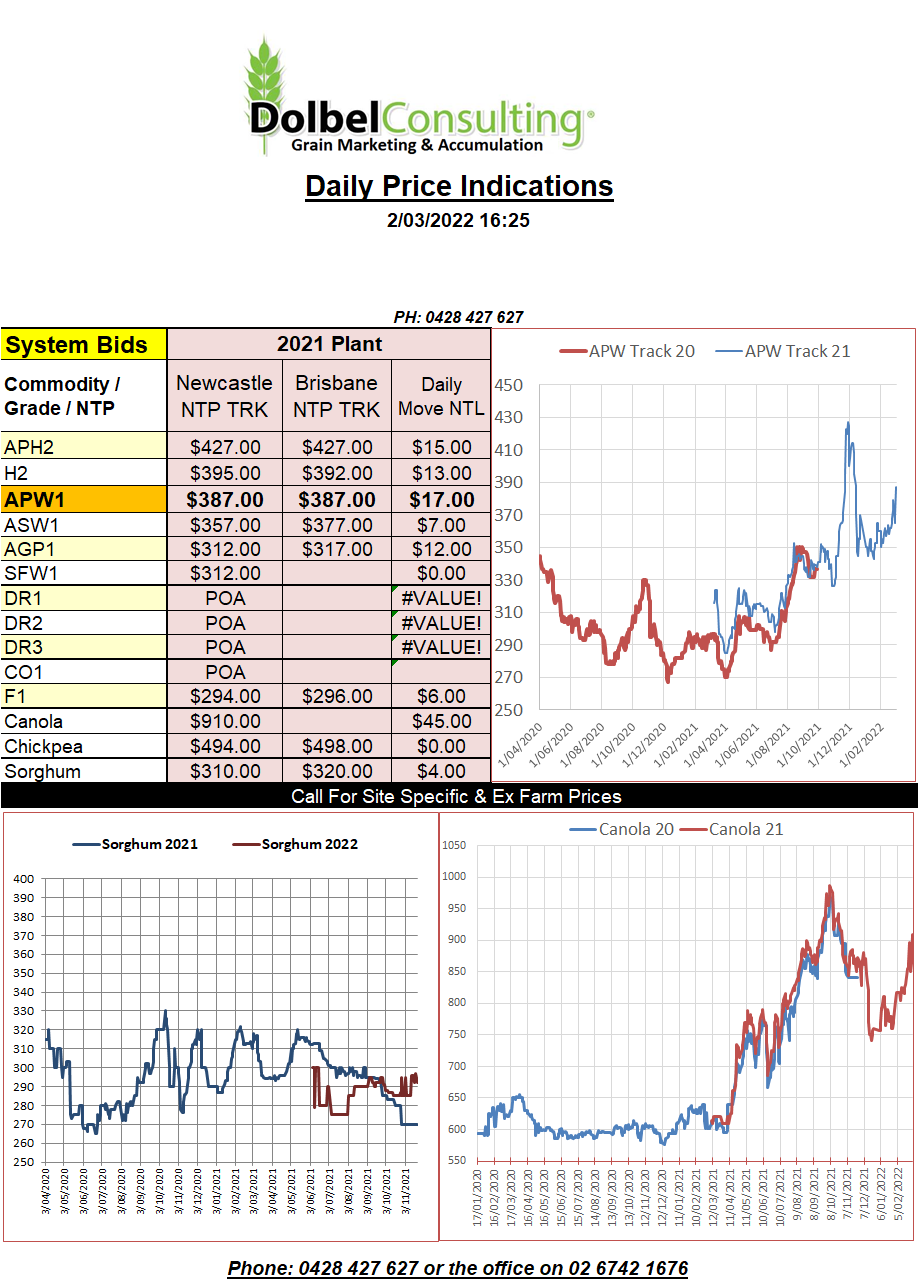02/03/22

The supply and demand tables are a very live document at present. Black Sea restrictions could, in a worse-case scenario, create severe market shortages compared to supply on current stock estimates .
In other words, if there are no further Ukraine / Russian exports of wheat prior to new crop harvest in the US and Europe and demand was to remain unchanged. Australia, Europe, the USA and Argentina would need to find roughly 15mt to 18mt of additional exportable stocks to plug the gap in supply from the Black Sea.
With N.American drought already putting pressure on exportable stocks out of the US and Canada. Quality issues across much of Europe last year and an Argentine crop of questionable volume and availability, it does tend to put Australia in the box seat. But there is little chance that Australia from a supply position or logistical position can indeed capitalise on this 100%.
As you can see this all depends on timelines. A swift conflict would in theory allow exports to start up again rather soon, a protracted, long term conflict, the complete opposite and potentially the entry of Black Sea wheat in time at bargain basement prices.
The flip side is that major exporting nations, bar Ukraine and Russia, will likely see a greater than expected drawn down on ending stocks in reports to come. Global stocks may not change significantly but the location of those stocks will remain incredibly important. Already we see China holding close to 50% of the worlds carry-over stocks. Throw another 20 – 30mt of Black Sea wheat into the “will not arrive to market” pile and the stocks to use ratio for available wheat starts to look very tight. So will the world plant wheat, lots of extra wheat, will the demand still be there in the first half of 2023 after our harvest. Big call, there are some very nice hedging opportunities out there though.
